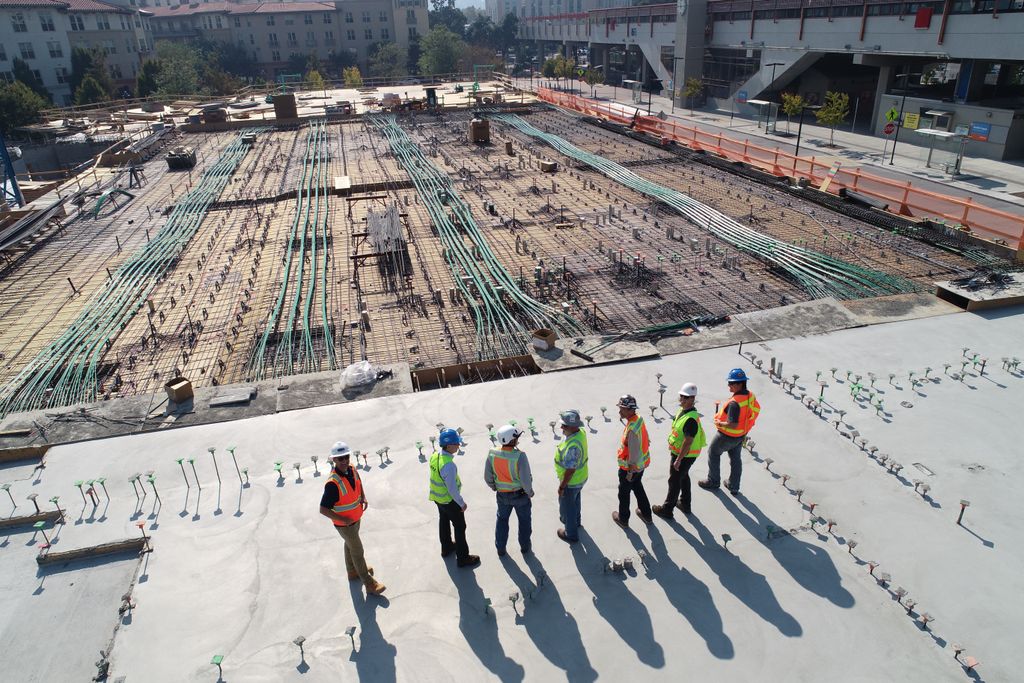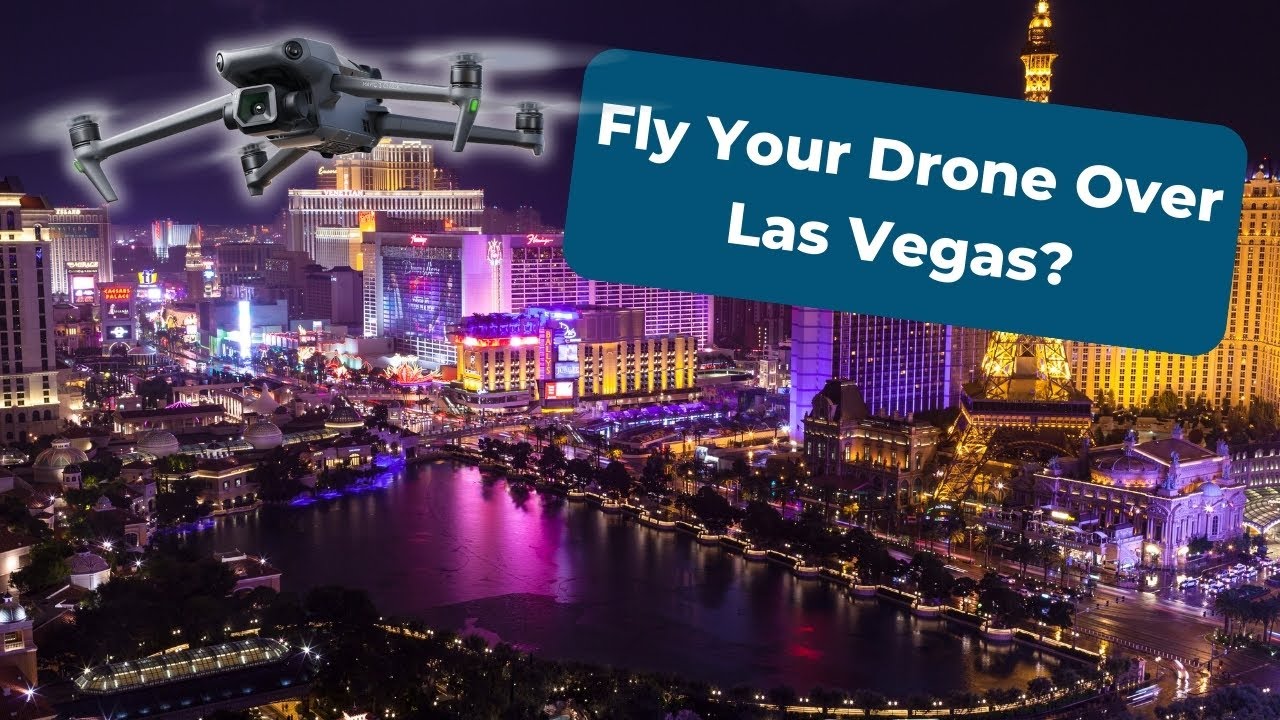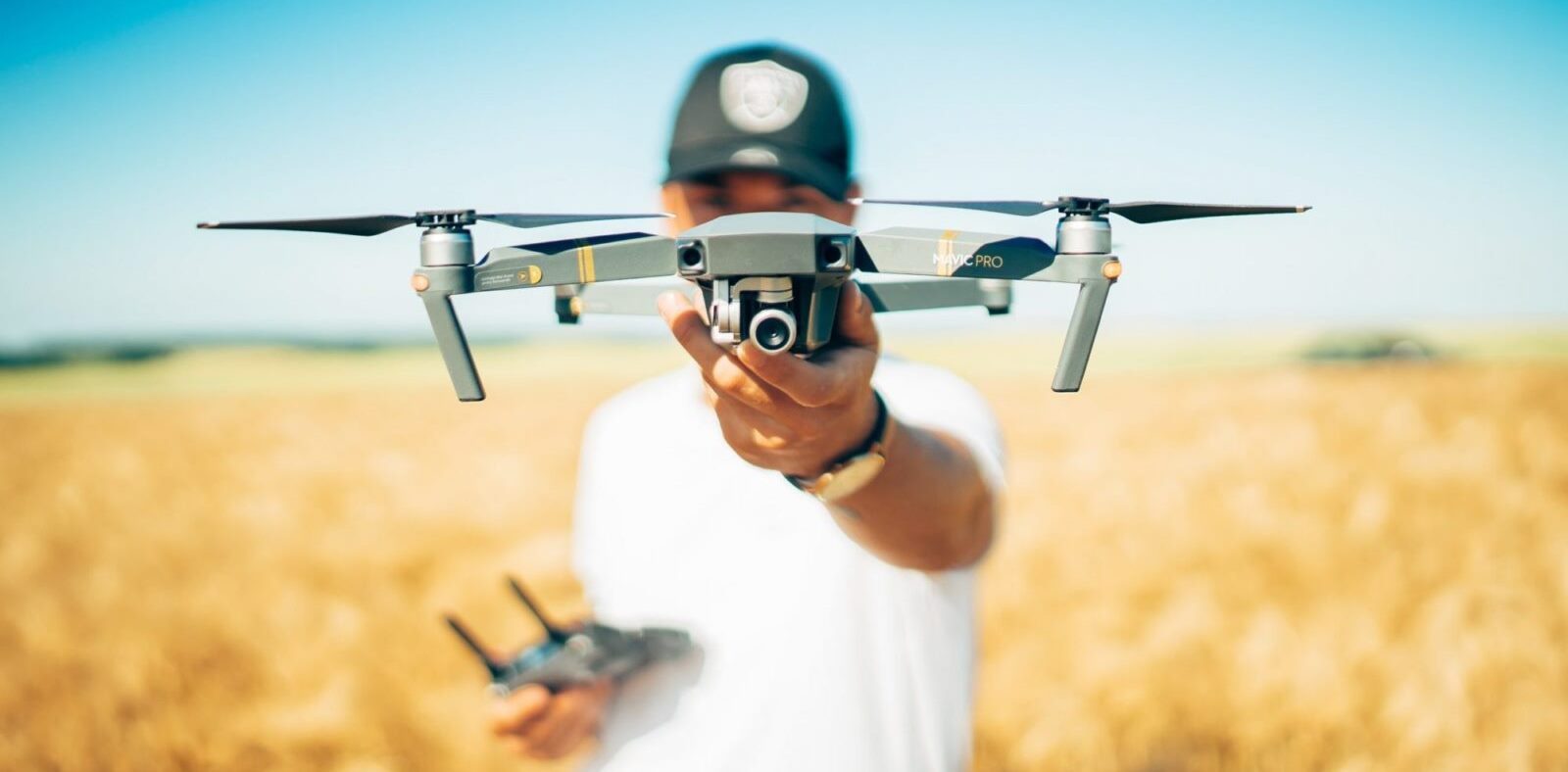
Innovating Architecture: The Rise of Construction Drone Services. The Las Vegas construction industry continually evolves, with drone services at the forefront of this transformation. Drones, equipped with cutting-edge cameras and sensors, have become pivotal in enhancing efficiency, safety, and project management on construction sites. St. Louis Drone Services exemplifies this innovation, offering comprehensive video and analytical capabilities that have redefined traditional construction practices. This article explores the multifaceted impact of drones, from enhancing site monitoring to integrating with advanced technologies like AR, and how these aerial sentinels are propelling construction to unprecedented heights.
Key Takeaways
- Drones have revolutionized construction site monitoring, providing real-time, 3D visual data that enhances precision and safety in project management.
- Integrating drones leads to significant cost savings and time efficiencies while also necessitating the development of new skill sets in the job market.
- Compliance with regulatory frameworks, certification, and training for drone operators, as well as addressing privacy concerns, are critical challenges in adopting drone services.
- Case studies demonstrate the successful application of drones in large-scale projects, disaster recovery, and historical restoration, showcasing their versatility.
- Future trends predict further advancements in drone technology, with AI and machine learning playing a pivotal role in shaping the next frontier for construction drones.
Revolutionizing the Skies: Drones in Modern Construction

The Advent of Aerial Technology in Building
As I reflect on the transformation of the construction landscape, the introduction of drones stands out as a pivotal moment. These aerial sentinels have revolutionized how we approach building projects, offering a level of precision and safety previously unattainable.
- Aerial Surveying
Drones have made aerial surveying a breeze, providing high-definition images and videos that grant a bird’s-eye view of construction sites. This not only enhances the monitoring of progress but also aids in the early detection of potential issues. - Safety and Efficiency
Using drones has mitigated the need for manual inspections, which often involve risky climbs and time-consuming efforts. Now, with the push of a button, we can conduct thorough inspections and safety checks from the safety of the ground.
Tip: Regular drone surveys can significantly reduce the risk of project delays by identifying problems before they escalate.
- Real-time Insights
The ability to capture real-time, 3D views of construction sites has been a game-changer. It ensures that materials are used efficiently, safety regulations are adhered to, and the project stays on track overall.
Integrating drones into construction is not just about adopting new technology; it’s about embracing a tool that enhances our capabilities and reshapes our expectations of what is possible in building.
Enhancing Precision and Safety on the Jobsite
As I’ve integrated drones into my construction projects, I’ve witnessed a remarkable improvement in precision and safety. These flying sentinels provide a bird’s-eye view that ground-based supervision can’t match. With their high-definition cameras and other specialized sensors, drones are the ultimate tool for hazard identification, detecting issues such as wobbly scaffolding or workers without proper safety gear.
The benefits extend beyond mere observation. Drones also contribute to creating detailed 3D models of the site, which serve as virtual maps to guide construction. This helps keep the project on schedule and ensures compliance with all safety and legal requirements.
Tip: Always ensure that your drone operations comply with local safety regulations to maintain a secure jobsite.
Here’s how drones have revolutionized safety on my sites:
- Early detection of safety hazards minimizes potential incidents.
- Enhanced site security reduces theft and vandalism.
- Real-time data facilitates nimble decision-making, allowing for immediate corrective actions.
The impact is clear: drones have become an indispensable part of modern construction, ensuring that projects are completed with greater accuracy and with the utmost regard for safety.
Streamlining Surveying and Inspection Processes
In my experience, integrating drones into surveying and inspection processes has been a transformative experience. With the ability to quickly capture high-resolution data from above, I’ve seen firsthand how drones expedite the creation of detailed site maps and models. This capability fosters better collaboration and informed decision-making among all project stakeholders.
Efficient project management is crucial, and drones play a pivotal role in achieving this. By providing rapid, accurate site assessments, the need for frequent site visits is significantly reduced, enabling efficient remote monitoring. This saves time and enhances safety by minimizing the need for physical presence in potentially hazardous areas.
Here’s a snapshot of the benefits I’ve observed:
- Enhanced precision in data collection
- Improved safety and risk reduction
- Significant time savings and cost reduction
- Better resource allocation and project management
Remember, while drones offer remarkable advantages, it’s essential to maintain a balance between technological reliance and human expertise to ensure the highest standards of quality and safety.
Economic Impacts of Drone Integration

Cost-Effectiveness and Time Savings
In my experience, the cost-effectiveness of drones in construction is undeniable. The initial investment may appear steep, but the long-term labor and operational efficiency savings are substantial. For example, drones can survey large areas in a fraction of the time it would take human workers, leading to significant time efficiency gains.
- Safety enhancements by reducing the need for manual inspections
- Accurate data collection for informed decision-making
- Real-time monitoring for timely issue resolution
This time efficiency translates to cost savings, as fewer person-hours are needed for monitoring and inspections. Moreover, the safety aspect cannot be overstated. By minimizing the need for workers to physically inspect dangerous areas, drones contribute to a safer working environment.
Remember, the value of drones goes beyond just financial metrics. They enable a level of precision and safety that was previously unattainable, making them an indispensable tool in modern construction.
Job Market Evolution and New Skill Sets
As I reflect on the trajectory of the construction industry, it’s clear that the job market is undergoing a profound transformation. The labor shortage is a persistent challenge, with a significant gap between the retiring workforce and the incoming talent. In 2024, I foresee a continued tight labor market, especially for onsite craft workers, and this trend doesn’t seem to be easing up.
To address this, firms prioritize recruiting young, entry-level employees. Integrating construction drones creates new roles and necessitates a shift in skill sets. Workers need to be proficient in technology, with a focus on data management and analysis. The rise of cost management software and collaborative KPI dashboards is a testament to the industry’s move towards more efficient project management.
Gen Z’s entrance into the workforce is poised to reshape our industry further. With their digital nativity, they’re accelerating the digital transformation of the construction industry. This shift involves adopting new technologies and embracing flexible work arrangements and hybrid schedules that align with the modern workforce’s preferences.
Embracing digital transformation is not optional; it’s imperative for attracting and retaining the next generation of construction professionals.
Here’s a glimpse at the evolving job roles in construction:
- Drone Pilots and Data Analysts
- Virtual Reality (VR) and Augmented Reality (AR) Specialists
- Sustainability and Compliance Coordinators
- Digital Project Managers
The adoption of VR and AR for training, the tracking of CO2 emissions, and the prioritization of socio-economic factors in projects indicate the broader changes underway. As we look towards the future, it’s clear that those who invest in these new skill sets will lead the industry’s evolution.
Long-Term Financial Implications for the Construction Industry
As I delve into the long-term financial implications for the construction industry, it becomes clear that the integration of drones is not just a fleeting trend but a strategic investment that will shape the future of construction economics. As highlighted in the snippets, the cost-effectiveness and efficiency of using drones are crucial in mapping, inspecting, and surveying, resulting in significant savings over time.
- Embracing drone technology has proven to be a wise financial decision for forward-thinking firms. By reducing the need for manual labor in specific tasks, companies can mitigate the impact of workforce shortages and the associated costs. Here’s a glimpse into how drones contribute to financial sustainability:
- Reduction in surveying time and costs
- Decreased risk of workplace accidents
- Lower insurance premiums due to enhanced safety measures
- Improved project management through real-time data
Remember, the true value of drones goes beyond immediate cost savings. It lies in their ability to enhance the quality and longevity of construction projects, leading to a stronger industry reputation and the potential for increased profit margins.
In 2024, drone technology is expected to complement the industry’s shift towards an asset-first approach. This shift is expected to promote more sustainable and efficient construction practices, resulting in assets that are optimized for both performance and longevity. The focus on sustainability, as mentioned, is not only about being green but also about making financial sense in terms of cost, labor, and materials. Data-driven insights will be crucial in unlocking these long-term benefits and steering the industry toward a more profitable and sustainable future.
Regulatory Landscape and Compliance Challenges

Navigating Through Legal Frameworks
As I delve into construction drone services, I understand the critical importance of navigating legal frameworks. Integrating drones into commercial construction is governed by numerous regulations that ensure safe and compliant operations.
One of the primary certifications I’ve encountered is the Federal Aviation Administration’s Part 107, a cornerstone for commercial drone pilots. Adhering to these regulations is not just a legal obligation but also a mark of professionalism and commitment to safety.
Here are some key points to consider when navigating the legal landscape:
- Understanding the scope of Part 107 and its applicability to your drone operations.
- I am staying informed about local and state laws that may impose additional restrictions.
- You ensure your drone activities do not infringe on privacy rights or airspace regulations.
Tip: Always stay informed about the latest regulatory changes and seek legal advice when in doubt to avoid costly penalties and project delays.
Certification and Training for Drone Operators
As I delve into the world of construction drones, I’ve come to appreciate the critical importance of proper certification and training for drone operators. It’s not just about knowing how to fly; it’s about understanding the intricate regulations that govern our skies.
To ensure compliance and safety, a structured approach to training is essential. Here’s a snapshot of the typical training process:
- Familiarization with drone technology and basic flight proficiency
- In-depth study of FAA rules and regulations
- Hands-on flight practice under supervised conditions
- Passing a knowledge test to obtain FAA certification
Remember, the goal of training is not only to pass the certification exam but also to cultivate a mindset of safety and responsibility.
Professional services, such as those offered by Drone Media St. Louis, emphasize the importance of FAA-certified pilots who are thoroughly trained in all aspects of drone operation and adhere to strict safety protocols. This level of expertise is crucial, mainly when drones are used for tasks such as aerial photography and cinematography in sectors like tourism and advertising.
Privacy and Airspace Concerns
As I delve deeper into the integration of drones within the construction industry, I am compelled to acknowledge the growing concerns surrounding privacy and airspace usage. The very nature of drones, capable of reaching areas otherwise inaccessible, raises questions about the surveillance of private property and the potential infringement on personal privacy.
To mitigate these concerns, I’ve compiled a list of best practices that drone operators should consider:
- Ensuring compliance with local and national privacy laws
- Establishing clear operational guidelines that respect privacy boundaries
- Engaging with communities to foster transparency and trust
Moreover, navigating the crowded skies requires a keen understanding of the regulatory environment. It’s essential to avoid interference with commercial air traffic and to respect the frequency space of first responders and other critical services. Avoid flying in bad weather to ensure safety and compliance with FAA regulations.
Always consult with legal experts and regulatory bodies before conducting drone operations to ensure that all privacy and airspace regulations are strictly followed.
Case Studies: Successful Drone Applications

Large-Scale Construction Projects
I’ve been closely following the integration of drones in large-scale construction projects, and the results are nothing short of revolutionary. Drones have played a pivotal role in streamlining processes and enhancing accuracy on projects, such as Juneau Construction’s digital transformation. As Jim Pritchett of JTM Construction emphasizes, efficiency in data processing is now easily achieved, enabling the transformation of basic sketches into detailed 3D and 4D simulations.
The impact on project timelines is evident. For instance, the cmBuilder and Balfour Beatty US partnership highlights the breakthroughs in managing site logistics. Here’s a glance at the transformative effects:
- Reduction in preconstruction planning time
- Enhanced precision in site surveys
- Improved safety protocols
- Real-time monitoring and adjustments
Embrace the digital shift with open arms. The ability to visualize and adjust project plans in real-time is a game-changer for the construction industry.
Looking ahead, the role of drones is set to expand, influencing not only engineers and project managers but also the entire project team. With advancements in AI and a focus on optimizing workflows, I’m excited about the potential for industry-wide productivity and sustainability. As we move into 2024 and beyond, the trend of using drones in renovation projects is also on the rise, with over half of all future construction projects expected to involve significant refurbishments.
Disaster Recovery and Reconstruction Efforts
In the wake of natural disasters, the rapid deployment of drones has proven to be a game-changer in recovery and reconstruction efforts. These uncrewed aerial vehicles (UAVs) provide a unique vantage point, enabling a quick assessment of damage and identifying areas in dire need of assistance. I’ve witnessed firsthand how drones facilitate a more coordinated response, significantly reducing the time between disaster and recovery.
Drones also play a crucial role in ensuring the safety of workers during the reconstruction phase. They provide real-time surveillance, which helps to avoid potential hazards in structurally compromised environments. Moreover, delivering supplies to inaccessible areas is invaluable in these critical situations.
Remember: In disaster scenarios, time is of the essence. Drones can be the difference between a swift recovery and prolonged hardship.
Integrating drones into disaster management is not just about immediate response but also about building resilience. Analyzing the collected data can inform future infrastructure development and inform the creation of more effective disaster preparedness plans. It’s a testament to the power of technology in enhancing our ability to withstand and recover from catastrophic events.
Historical Preservation and Restoration
In my recent endeavors, I’ve become deeply involved in the delicate art of historical preservation and restoration. The goal is to balance minor interventions with the existing structure’s integrity, aiming for conservation over demolition. This approach honors the past and ensures these structures can continue to serve future generations.
Enhancing Existing Structures Through Retrofitting is a trend that’s particularly close to my heart. In cities like London, the focus is on maintaining the historic fabric of buildings while updating them for modern use. This requires a comprehensive data footprint involving multiple laser scans and engineering models.
Remember, the key to successful restoration is minimal interference with maximum respect for the original architecture.
Here’s a snapshot of the process:
- Initial assessment of the building’s condition
- Detailed laser scanning and 3D modeling
- Structural analysis and planning for interventions
- Careful execution of restoration work
By integrating drones into this process, we can achieve a level of precision and safety previously unattainable. Drones offer a bird’s-eye view, providing invaluable insights for inspecting hard-to-reach areas and creating detailed surveys that inform our restoration strategies. As we move forward, I’m convinced that drones will become an indispensable tool in our mission to preserve history.
Innovative Technologies and Future Trends

Advancements in Drone Hardware and Software
As I delve into the realm of construction drones, I’m continually amazed by the rapid advancements in drone hardware and software. These innovations are not just incremental improvements; they are reshaping the capabilities of drones in the construction industry.
Enhanced sensors and higher-resolution cameras are now standard, enabling drones to capture data with unprecedented detail and accuracy. This leap in quality enables more accurate measurements and informed decision-making on the construction site. Moreover, the integration of sophisticated software has streamlined data processing, enabling the rapid conversion of aerial imagery into actionable insights.
- Improved Battery Life: Drones can now operate for more extended periods, reducing downtime.
- Advanced Navigation Systems: Enhanced GPS and obstacle avoidance systems.
- Automated Flight Modes: Pre-programmed flight paths for consistent data collection.
Remember, the key to leveraging these technological advancements is to stay informed and adapt quickly to new tools that can provide a competitive edge.
The future looks bright as we anticipate further integration of artificial intelligence and machine learning, which promise to automate further and refine data analysis. The construction industry is on the cusp of a new era, where drones are not just tools but partners in building the future.
The Role of AI and Machine Learning
As I delve deeper into the transformative potential of AI in construction, I’m struck by the sheer scope of its capabilities. Artificial intelligence and machine learning are not just buzzwords, but powerful tools that are reshaping how we approach complex tasks. From optimizing design through predictive analytics to enhancing onsite coordination, AI is a game-changer.
One of the most exciting developments is the synergy between Building Information Modeling (BIM) and Artificial Intelligence (AI). This combination unlocks a new realm of possibilities, enabling more intelligent decisions that extend well beyond the design phase. Imagine a world where digital twins become the norm, providing unparalleled insights and value to clients.
Tip: Embrace AI-driven technologies to automate and augment decision-making processes, ensuring a competitive edge in the rapidly evolving construction landscape.
The integration of AI doesn’t just stop at project management; it’s also revolutionizing staffing strategies. With a growing shortage of skilled labor, AI and robotic technologies offer a lifeline, increasing accuracy and improving delivery times. We must continue to invest in these areas to sustain the industry’s growth and efficiency.
Here’s a glimpse into the future impact of AI on construction:
- Design reviews and clash detection become more precise.
- Onsite coordination is streamlined through advanced data analysis.
- Data silos are dismantled, fostering a more integrated and informed approach to project management.
- Continuous investment in automation and robotics addresses labor shortages and elevates productivity.
The construction industry is on the cusp of a technological revolution, and AI is at the forefront. It’s an exhilarating time to be part of this journey, and I’m eager to witness the innovations that will emerge in the next decade.
Predicting the Next Frontier for Construction Drones
As we stand on the threshold of this transformative frontier, I am filled with a surge of excitement for the future of construction drones. The innovation potential is boundless, with drones poised to become even more integral to the construction process. They are set to revolutionize not just how we build but also how we conceive and manage projects.
Autonomy and intelligence will likely be at the forefront of the next wave of advancements. Imagine drones that can fly independently and make decisions based on real-time data analysis. This could lead to a significant leap in construction efficiency and safety.
Embrace the change. The construction sites of the future will be smarter, safer, and more efficient, thanks to the drones that will fly above them.
Your participation in this journey is crucial. As we navigate this new era, your insights and experiences will help shape the trajectory of drone technology in the construction industry. So, I invite you to share your vision for the future. How do you see drones evolving in our industry? What breakthroughs do you anticipate? Your voice is a valuable addition to this collective exploration.
As we look toward the horizon of aerial imaging, ‘Las Vegas Sky View‘ remains at the forefront of embracing innovative technologies and future trends in drone services. Our commitment to providing the best drone services for photography and videography in Las Vegas ensures that we constantly update our fleet with the latest drones equipped with cutting-edge cameras and stabilization technology. This dedication to excellence enables us to capture breathtaking views and stunning footage that sets our clients’ projects apart. Whether you’re looking to immortalize the neon glow of the Strip or the natural beauty of the surrounding desert landscapes, our expert pilots and state-of-the-art drones are ready to elevate your vision. Don’t miss the chance to work with the best in the business. Visit our website to discover how ‘Las Vegas Sky View’ can bring a new perspective to your photography and videography projects, offering unparalleled quality and innovation.
Embracing the Skies: The Future of Construction with Drones
In summary, integrating drone services in the construction industry represents a significant leap forward in innovation and efficiency. These aerial sentinels enhance real-time monitoring and project management, elevating safety and precision. As we witness the global adoption of drones from St. Louis to India, it’s clear that they are not just tools but partners in building the future. The construction landscape is changing, and drones are at the forefront, ensuring that every brick contributes to a well-structured and sustainably built environment. The sky is no longer the limit; it’s the new foundation for construction excellence.
Frequently Asked Questions
How are drones revolutionizing the construction industry?
Drones are transforming the construction industry by providing real-time aerial views, enhancing precision and safety on job sites, streamlining surveying and inspection processes, and integrating with advanced technologies such as augmented reality (AR) and building information modeling (BIM) for improved project management and analytics.
What are the economic benefits of using drones in construction?
Integrating drones in construction leads to cost-effectiveness and time savings due to more efficient project monitoring, reduced need for manual labor in specific tasks, and the ability to quickly gather data and make informed decisions, which can result in long-term financial benefits for the industry.
What challenges do construction companies face with drone compliance?
Construction companies face challenges such as navigating complex legal frameworks, ensuring that drone operators are certified and trained, and addressing privacy and airspace concerns when operating drones on construction sites.
Can you provide examples of successful drone applications in the construction industry?
Successful drone applications in construction include monitoring large-scale projects for progress and safety, aiding in disaster recovery and reconstruction efforts, and assisting in the preservation and restoration of historic buildings.
What technological advancements are shaping the future of construction drones?
Advancements in drone hardware and software are driving future trends in construction drones, including the integration of AI and machine learning for more intelligent data analysis and decision-making, as well as the potential for drones to automate further and optimize construction processes.
How is St. Louis Drone Services contributing to the rise of construction drone services?
St. Louis Drone Services is at the forefront of the construction drone revolution, offering full-service video and analytics solutions that enhance efficiency, safety, and project management for construction professionals.





Comments are closed.